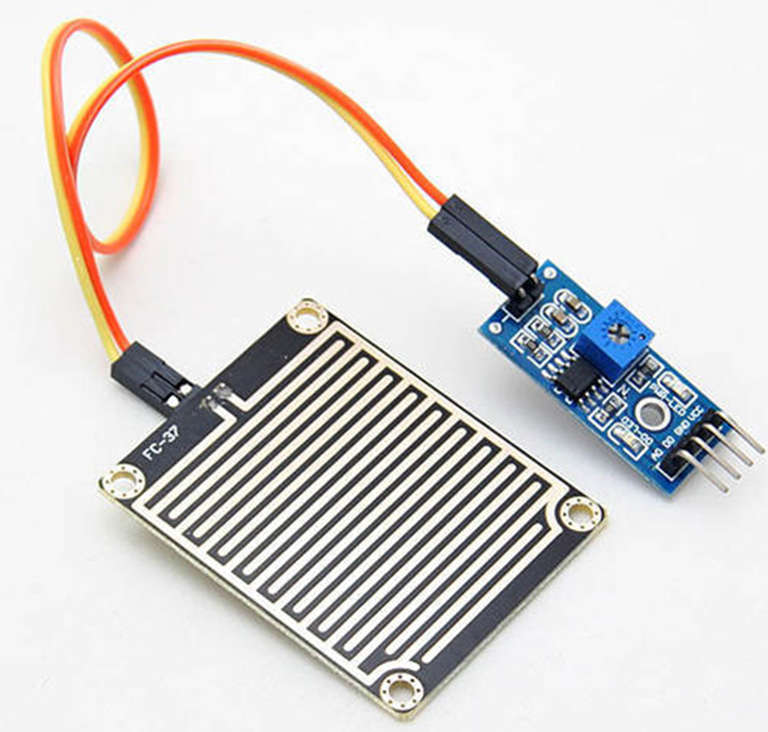- The rain sensor acts like a switching device activated by rainfall. It works like, whenever there is rain, the switch will be normally closed.
- This device is used to detect rainfall.
- It is a water conversation device for an automatic irrigation system that causes the system to shut down in the event of rainfall.

Working of Rain Sensor
The above diagram shows the pin connection of the module, this module is connected with a sensing pad.
- Pin1 (VCC): It is a 5V DC pin
- Pin2 (GND): it is a GND (ground) pin
- Pin3 (DO): It is a low/ high output pin
- Pin4 (AO): It is an analog output pin
- The sensing pad with a series of exposed copper traces, together acts as a variable resistor.
- That resistance varies according to the amount of water on its surface.</li.
- This resistance is inversely proportional to the amount of water.
- The more water on the surface means better conductivity and will result in a lower resistance.
- The less water on the surface means poor conductivity and will result in higher resistance.
- The sensor produces an output voltage according to the resistance, which by measuring we can determine whether it’s raining or not.
![]()
Applications of Rain Sensor
- It is used as a water preservation device and this is connected to the irrigation system to shut down the system in the event of rainfall.
- It’s used to guard the internal parts of an automobile against rainfall as well as to support the regular windscreen wiper’s mode.
- The rain sensor is used in specialized satellite communications aerials for activating a rain blower over the opening of the aerial feed, to get rid of water droplets from the Mylar wrap to keep pressurized as well as dry air within the waveguides.
